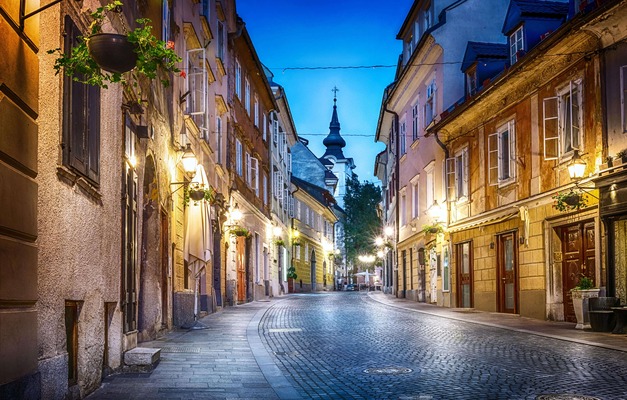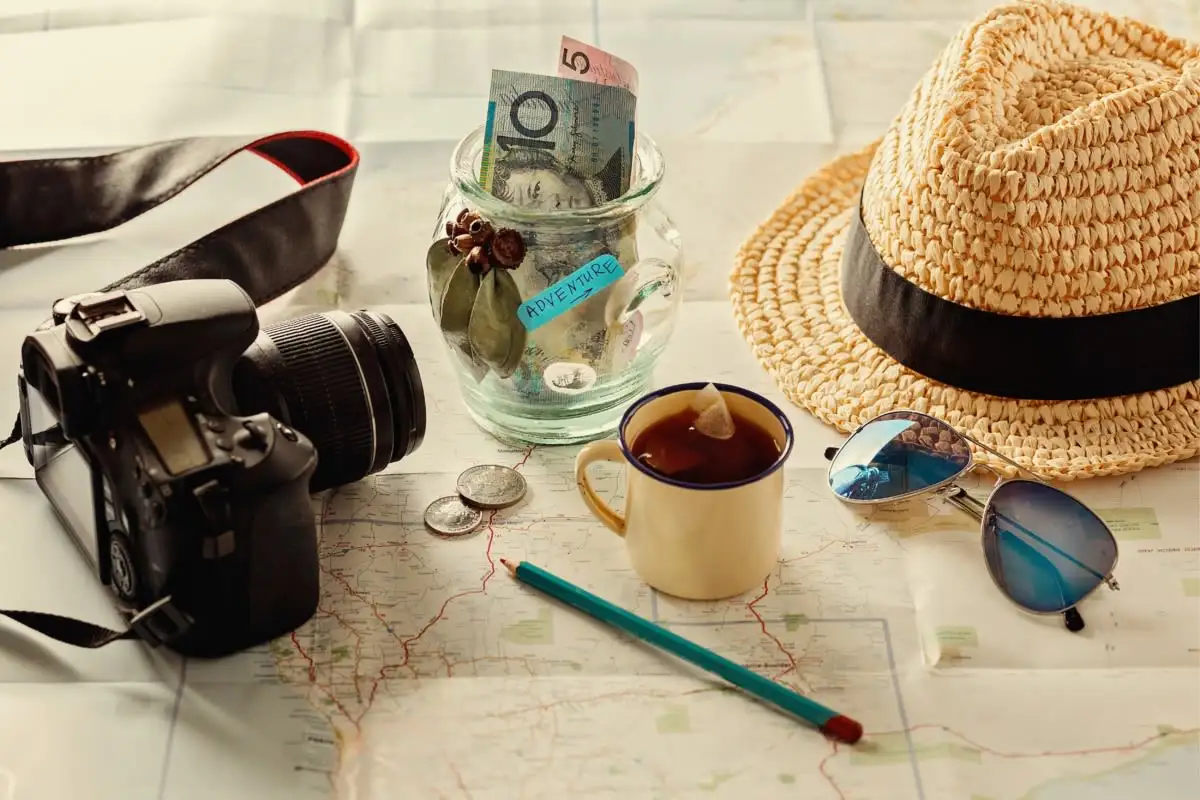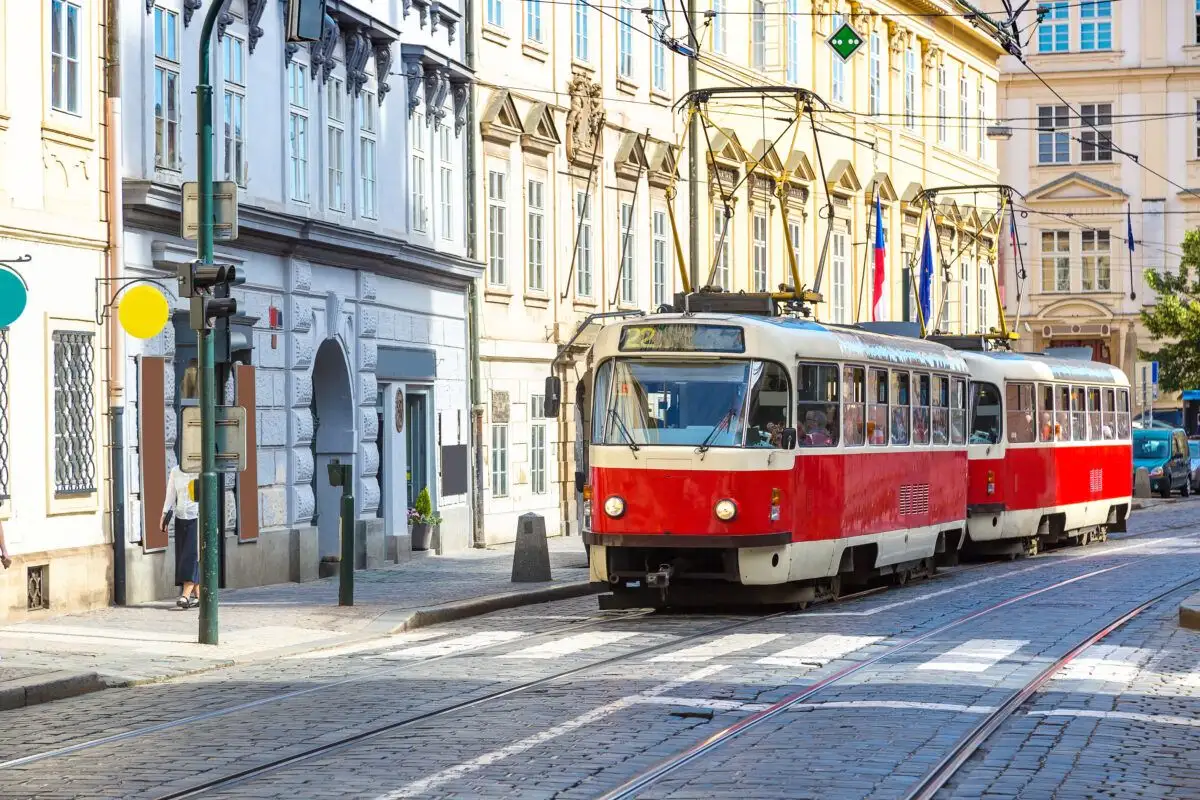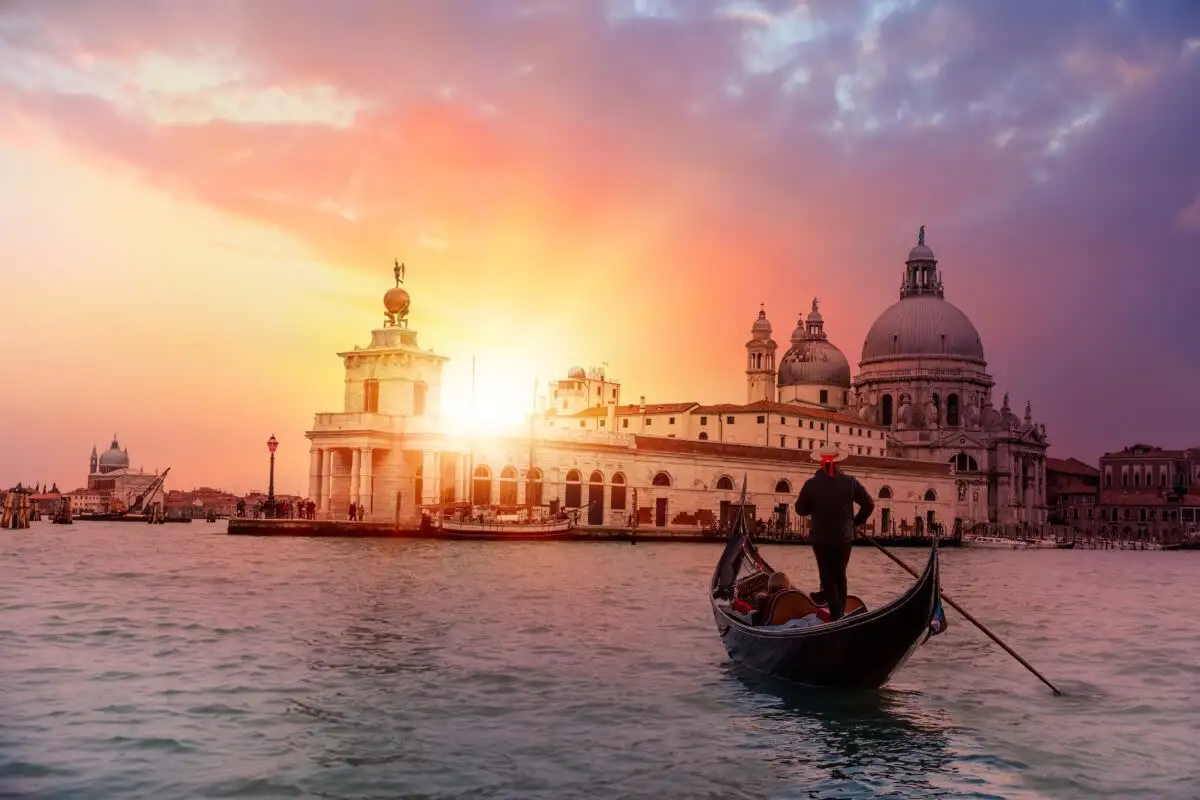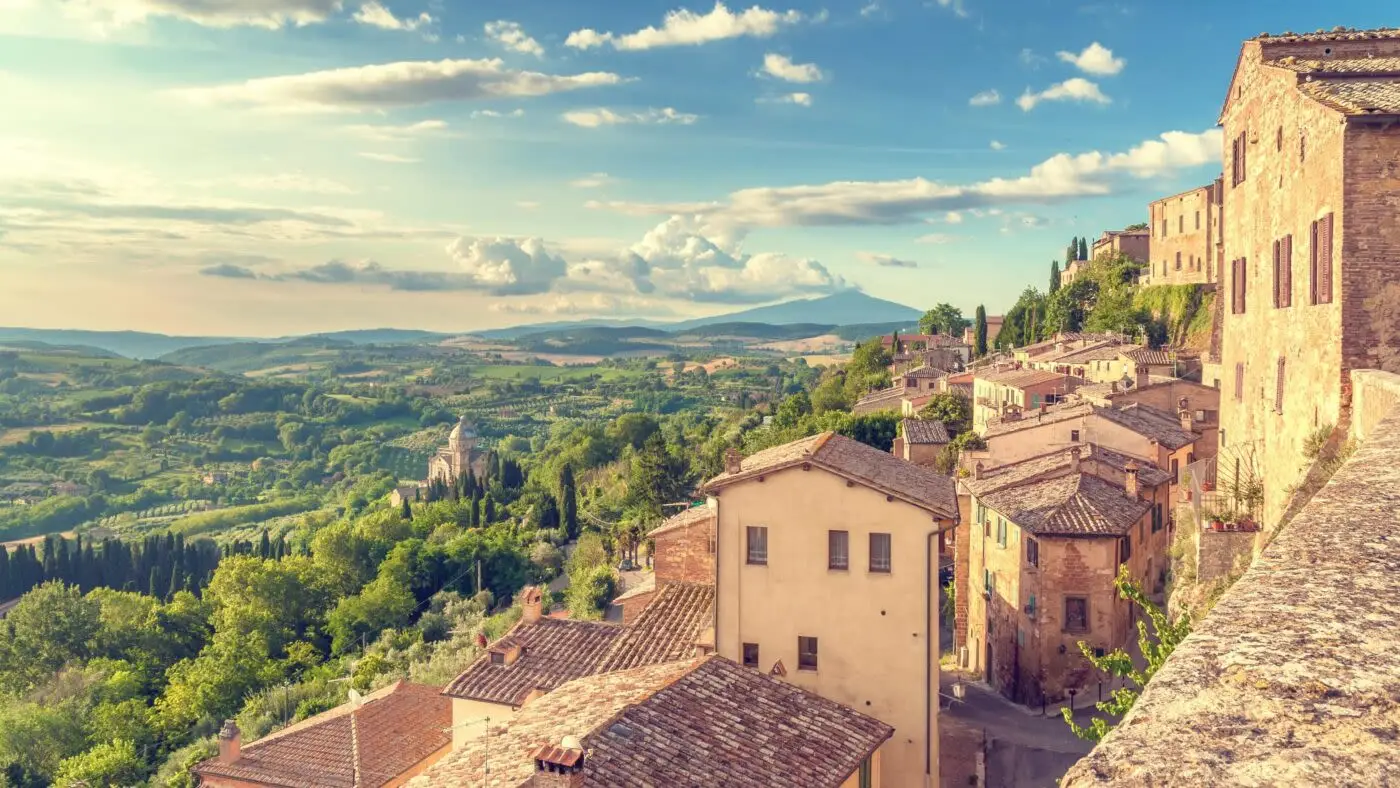
5 Days of Enchanting Romance in Venice and Verona
 5 Day Tour of Venice
5 Day Tour of Venice
Overview
Trip Map
Itinerary
Inclusions
Reviews
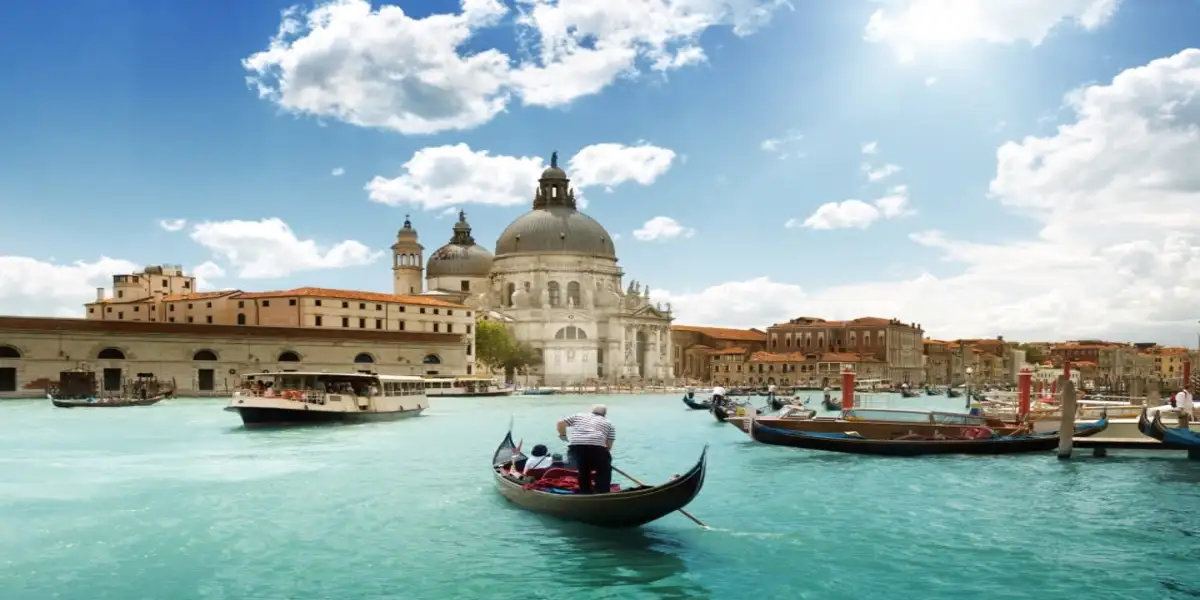

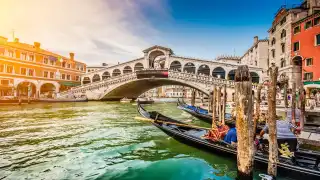




5 Days 4 Nights
Best Time: Jan-Dec
Cultural Exploration
History Buffs
Experience the magic of Venice on this 5-day journey to Italy’s most romantic destination. Every canal whispers tales of love & adventure in the city of Casanova, from the grandeur of Piazza San Marco to the intimacy of a private gondola cruise. Wander narrow streets and over the iconic Rialto Bridge, then savor an evening meal al fresco as you admire the view of the Grand Canal. Take a day trip to Verona, the city of Romeo & Juliet, and immerse yourself in its rich history and Renaissance charm. With private guided tours and detailed travel guidance from Go Real Travel’s mobile app, you’ll focus on romance rather than the stresses of travel.
- Marvel at the breathtaking beauty of St. Mark's Basilica in the heart of Venice.
- Enjoy a private romantic gondola cruise along Venice’s enchanting canals.
- Browse a market and stroll across the Rialto Bridge, enjoying stunning views of the Grand Canal.
- Visit Juliet's Balcony in Verona, a symbol of eternal love and romance.
- Venture to the island of Burano, renowned for its brightly colored houses and exquisite lace-making.
Experience the magic of Venice on this 5-day journey to Italy’s most romantic destination. Every canal whispers tales of love & adventure in the city of Casanova, from the grandeur of Piazza San Marco to the intimacy of a private gondola cruise. Wander narrow streets and over the iconic Rialto Bridge, then savor an evening meal al fresco as you admire the view of the Grand Canal. Take a day trip to Verona, the city of Romeo & Juliet, and immerse yourself in its rich history and Renaissance charm. With private guided tours and detailed travel guidance from Go Real Travel’s mobile app, you’ll focus on romance rather than the stresses of travel.
- Marvel at the breathtaking beauty of St. Mark's Basilica in the heart of Venice.
- Enjoy a private romantic gondola cruise along Venice’s enchanting canals.
- Browse a market and stroll across the Rialto Bridge, enjoying stunning views of the Grand Canal.
- Visit Juliet's Balcony in Verona, a symbol of eternal love and romance.
- Venture to the island of Burano, renowned for its brightly colored houses and exquisite lace-making.

Grand Canal
European History

Saint Mark's Basilica
Architecture

Rialto Bridge
Architecture

Gallerie dell'Academia
Museums & Galleries

Islands of Murano & Burano
Cultural
Must see sights

Grand Canal
European History

Saint Mark's Basilica
Architecture

Rialto Bridge
Architecture

Gallerie dell'Academia
Museums & Galleries

Islands of Murano & Burano
Cultural
Starting from
$1299
per person
 Not included
Not included Secure Your Customizable Trip
Enter your details to embark on a journey that can be tailored just for you.
Start
Travelers
0 travelers
Add Room
Remove Room
Preferred Hotel Stars
Select Hotel Stars
Craft Your Own Itinerary
Select your interests and destinations for a trip plan inspired by you.
Venice in Five Days Trip - Map & Itinerary
Enable/Disable Map Scrolling
Click To Make Map Interactive

Venice in Five Days Trip Timeline
 Edit Details
Edit DetailsArrival
4 nights
Venice
Italy
Departure
Day-By-Day Itinerary of Venice in Five Days Trip

Day 1
Arrive Venice
Day 1
Arrive Venice



To Be Determined
Transfer from Airport
There are two main airports in Venice. You will likely arrive at the main airport of Venice Marco Polo which is located 5 miles (8km) across the water from Venice. The water bus (i.e. the "vaparetto") picks up directly at the airport and delivers you to Venice. You'll find the docks just by following the signs and you can purchase a water bus ticket at the airport for 15 EUR. You can also book a private, and very expensive, water taxi directly to your hotel, or take a land taxi to Piazzale Roma near the Venice main train station. From there you can walk or catch a water bus to your hotel. Uber is not available in Venice. If you are arriving at the more distant Treviso Airport, you will need to take a shuttle bus or an expensive taxi (100 EUR) to Venice. The ATVO bus delivers you to the Piazzale Roma on Venice in 70 minutes. The Barzi Bus Service takes you to the Tronchetto docks in 40 minutes, but from there you must take a water taxi or water bus. Both cost 12 EUR.

Day 1
Arrive Venice


Day 1
Arrive Venice




To Be Determined:
Transfer from Airport
Mid-Day to Late Afternoon:
St Mark's Square
Late Afternoon:
The Grand Canal


Day 2
Venice
Day 2
Venice



9:00 AM - 12:00 PM
'First Walk', Guided Tour in Venice
If you are a first-time visitor to Venice, the best approach is an introductory tour. This 3-hour private guided walking excursion begins with a selection of the “must sees,” including St. Mark's Square, the former political center of the Venetian Republic, with its many famous buildings: the Doges' Palace, the Bridge of Sighs, the Marciana Library, the Bell Tower, and the Clock Tower. You'll end your tour in the Rialto neighborhood next to the famous Rialto Bridge.

Doges' Palace
Explore the staterooms and masterpieces inside this famous Gothic-style Palace.
Show More

Doges' Palace
Explore the staterooms and masterpieces inside this famous Gothic-style Palace.
Show More

Doges' Palace
Explore the staterooms and masterpieces inside this famous Gothic-style Palace.
Show More

Doges' Palace
Explore the staterooms and masterpieces inside this famous Gothic-style Palace.
Show More

Doges' Palace
Explore the staterooms and masterpieces inside this famous Gothic-style Palace.
Show More
prev
next

Day 2
Venice


Doges' Palace
 Highlight of 'First Walk', Guided Tour in Venice
Highlight of 'First Walk', Guided Tour in VeniceExplore the staterooms and masterpieces inside this famous Gothic-style Palace.
Important Note: Entry lines can be very long. We suggest taking advantage of skip the line entry. As the name suggests, the Palace was the official residence of the Venetian rulers, the Doges, and the chief magistrates. The building was founded in the 9th century, but the present one dates from the 14th century. Tour its elaborate staterooms, grand halls and the 24-carat golden staircase before seeking out its collection of priceless masterpieces by Venetian artists including Titan, Veronese and Tintoretto. Be sure to spend some time in the most incredible room of all, the Chamber of the Great Council, the assembly hall where all Venetian patricians gathered to participate in the running of the city - up to 2,500 at any one time. There you will find the Doge's throne and the world's longest canvas painting in the world, Tintoretto's Il Paradiso.

Doges' Palace
 Highlight of 'First Walk', Guided Tour in Venice
Highlight of 'First Walk', Guided Tour in VeniceExplore the staterooms and masterpieces inside this famous Gothic-style Palace.
Important Note: Entry lines can be very long. We suggest taking advantage of skip the line entry. As the name suggests, the Palace was the official residence of the Venetian rulers, the Doges, and the chief magistrates. The building was founded in the 9th century, but the present one dates from the 14th century. Tour its elaborate staterooms, grand halls and the 24-carat golden staircase before seeking out its collection of priceless masterpieces by Venetian artists including Titan, Veronese and Tintoretto. Be sure to spend some time in the most incredible room of all, the Chamber of the Great Council, the assembly hall where all Venetian patricians gathered to participate in the running of the city - up to 2,500 at any one time. There you will find the Doge's throne and the world's longest canvas painting in the world, Tintoretto's Il Paradiso.

Doges' Palace
 Highlight of 'First Walk', Guided Tour in Venice
Highlight of 'First Walk', Guided Tour in VeniceExplore the staterooms and masterpieces inside this famous Gothic-style Palace.
Important Note: Entry lines can be very long. We suggest taking advantage of skip the line entry. As the name suggests, the Palace was the official residence of the Venetian rulers, the Doges, and the chief magistrates. The building was founded in the 9th century, but the present one dates from the 14th century. Tour its elaborate staterooms, grand halls and the 24-carat golden staircase before seeking out its collection of priceless masterpieces by Venetian artists including Titan, Veronese and Tintoretto. Be sure to spend some time in the most incredible room of all, the Chamber of the Great Council, the assembly hall where all Venetian patricians gathered to participate in the running of the city - up to 2,500 at any one time. There you will find the Doge's throne and the world's longest canvas painting in the world, Tintoretto's Il Paradiso.

Doges' Palace
 Highlight of 'First Walk', Guided Tour in Venice
Highlight of 'First Walk', Guided Tour in VeniceExplore the staterooms and masterpieces inside this famous Gothic-style Palace.
Important Note: Entry lines can be very long. We suggest taking advantage of skip the line entry. As the name suggests, the Palace was the official residence of the Venetian rulers, the Doges, and the chief magistrates. The building was founded in the 9th century, but the present one dates from the 14th century. Tour its elaborate staterooms, grand halls and the 24-carat golden staircase before seeking out its collection of priceless masterpieces by Venetian artists including Titan, Veronese and Tintoretto. Be sure to spend some time in the most incredible room of all, the Chamber of the Great Council, the assembly hall where all Venetian patricians gathered to participate in the running of the city - up to 2,500 at any one time. There you will find the Doge's throne and the world's longest canvas painting in the world, Tintoretto's Il Paradiso.

Doges' Palace
 Highlight of 'First Walk', Guided Tour in Venice
Highlight of 'First Walk', Guided Tour in VeniceExplore the staterooms and masterpieces inside this famous Gothic-style Palace.
Important Note: Entry lines can be very long. We suggest taking advantage of skip the line entry. As the name suggests, the Palace was the official residence of the Venetian rulers, the Doges, and the chief magistrates. The building was founded in the 9th century, but the present one dates from the 14th century. Tour its elaborate staterooms, grand halls and the 24-carat golden staircase before seeking out its collection of priceless masterpieces by Venetian artists including Titan, Veronese and Tintoretto. Be sure to spend some time in the most incredible room of all, the Chamber of the Great Council, the assembly hall where all Venetian patricians gathered to participate in the running of the city - up to 2,500 at any one time. There you will find the Doge's throne and the world's longest canvas painting in the world, Tintoretto's Il Paradiso.
prev
next

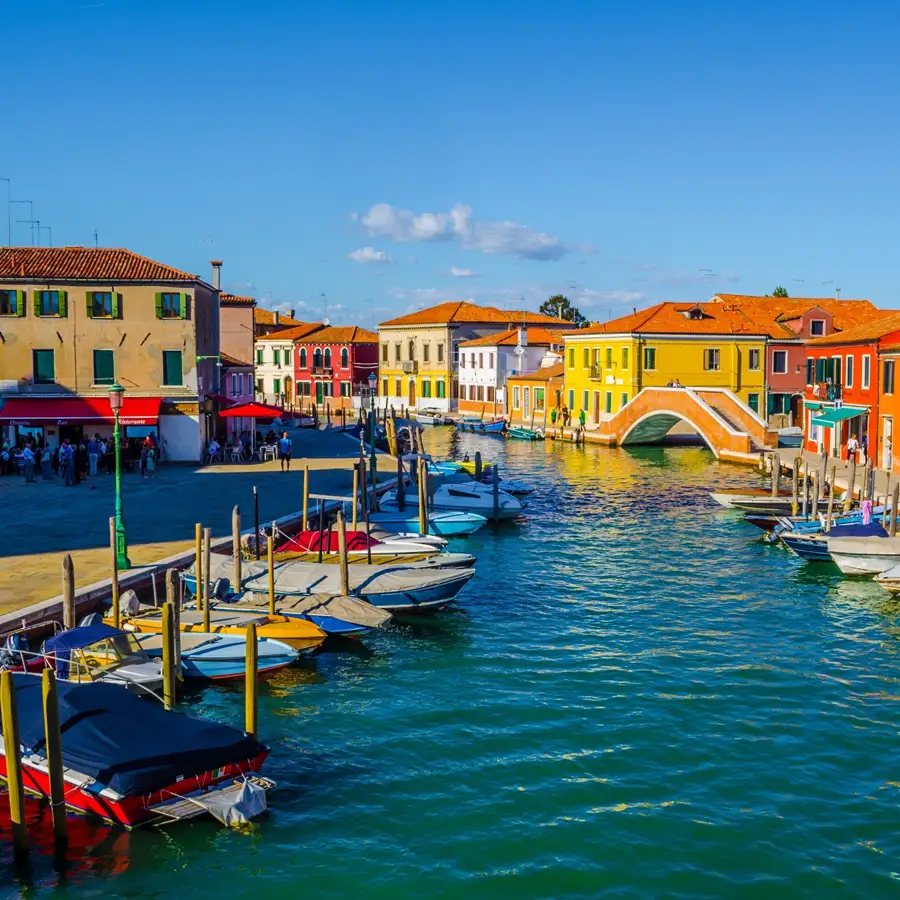
Day 3
Venice
Day 3
Venice




Morning to Afternoon
Murano & Burano
Explore the intricacies of two famed Italian handicrafts with a day trip from Venice to the nearby islands of Murano and Burano. Stop by a glass factory or two and watch a live demonstration of glass artisans at work on the island of Murano, before hopping over to Burano, known for its brightly colored buildings and lace making, a tradition that dates back to the 16th Century. Both quiet islands offer a peaceful retreat from the often tourist filled squares of Venice's mainland. You can easily reach them by taking a guided tour or simply by catching the Vaporetto. It only takes about ten minutes to reach Murano from the F.te Nove stop, and another 30 minutes to reach Burano. Once arrived you will surely enjoy the laid-back island havens, both with their own Grand Canals, colorful buildings and a host of fascinating workshops, showrooms, and picturesque sidewalk cafes.
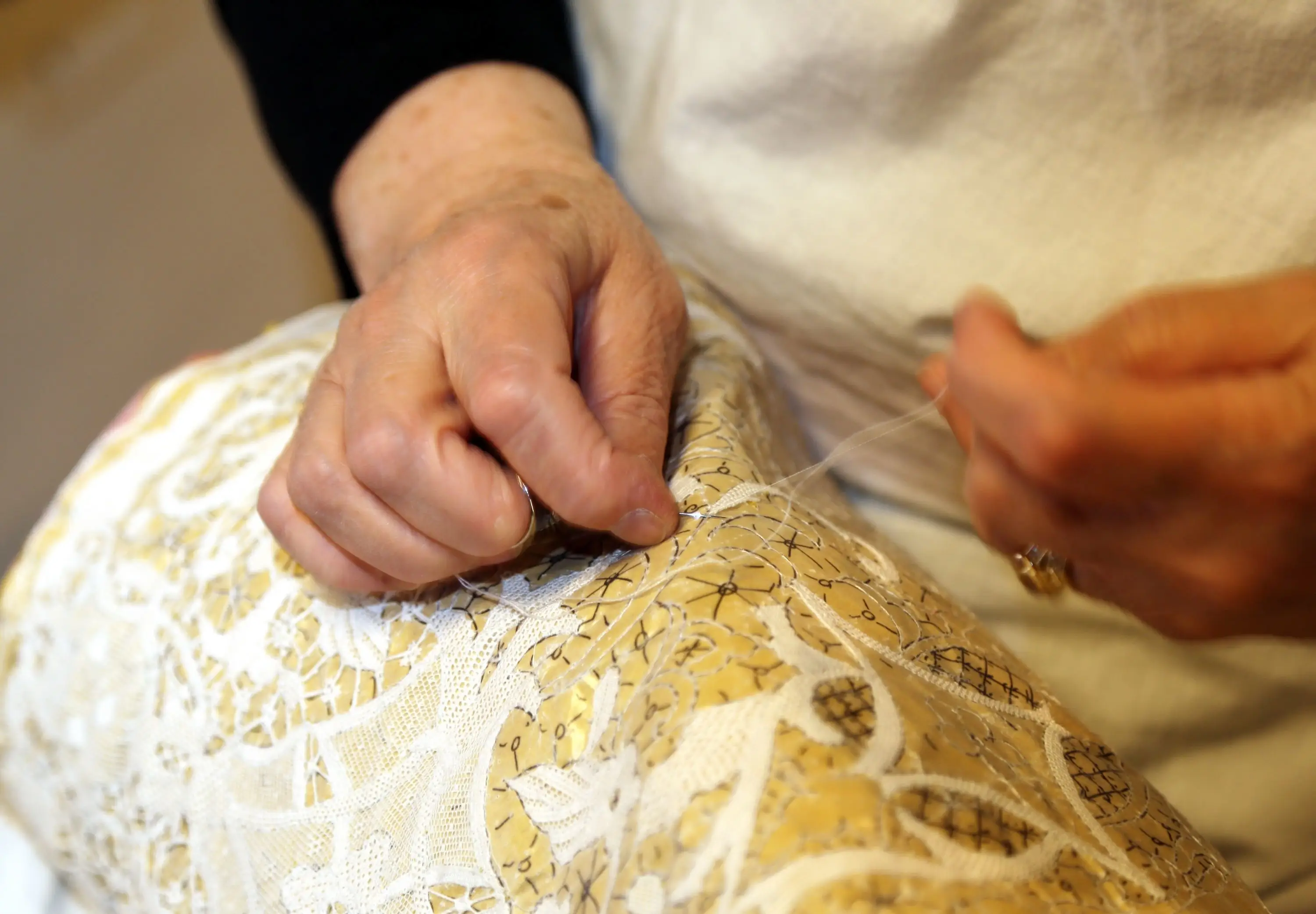
Museum of Lace (Museo del Merletto)
Observe firsthand one of the world's oldest and most famous traditions of lace making.
Show More

Burano's Colorful Houses
Take a walk through Venice's most colorful island and enjoy the unusual sight of its brightly-painted flourescent houses.
Show More
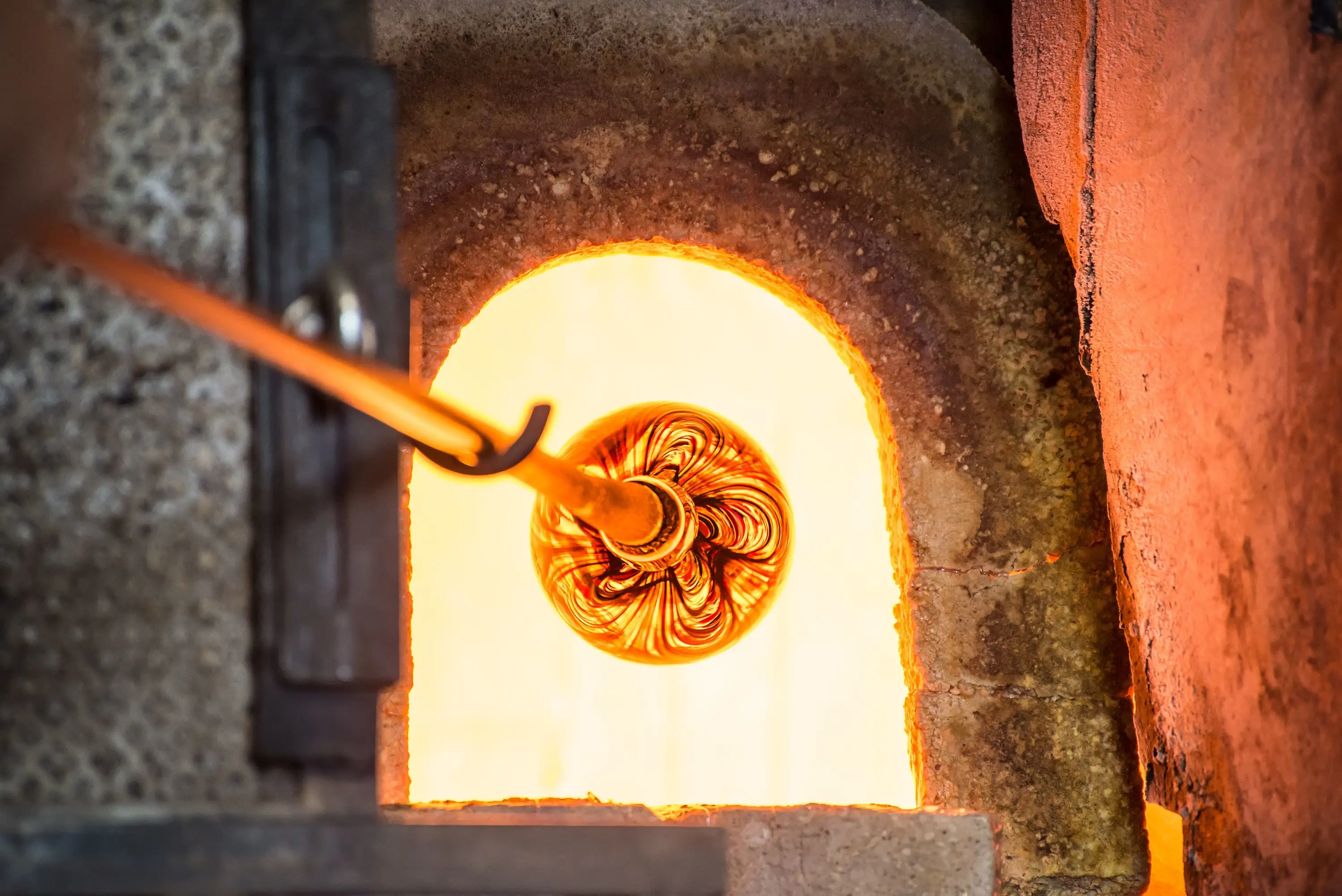
Glass Museum & Murano's Glass-Making Factories
See a superb collection of Venetian glass inside the Museum of Glass, and then stop by one of the island's workshops for a live demonstration.
Show More

Museum of Lace (Museo del Merletto)
Observe firsthand one of the world's oldest and most famous traditions of lace making.
Show More

Burano's Colorful Houses
Take a walk through Venice's most colorful island and enjoy the unusual sight of its brightly-painted flourescent houses.
Show More

Glass Museum & Murano's Glass-Making Factories
See a superb collection of Venetian glass inside the Museum of Glass, and then stop by one of the island's workshops for a live demonstration.
Show More

Museum of Lace (Museo del Merletto)
Observe firsthand one of the world's oldest and most famous traditions of lace making.
Show More
prev
next

Day 3
Venice


Museum of Lace (Museo del Merletto)
 Highlight of Murano & Burano
Highlight of Murano & BuranoObserve firsthand one of the world's oldest and most famous traditions of lace making.
Burano is historically a fishing village known for its handcrafted lace and technicolor houses. The legend goes that a sailor was lured to the island by a beautiful mermaid. She splashed her tail and created intricately patterned sea spray which she used as her wedding veil for her upcoming nuptials to the sailor. The village girls were very jealous of her veil and did their best to replicate the airy patterns with needle and thread, thus beginning Burano’s tradition of handcrafted lace. The Museo del Merletto was established in 1978 in the former gothic palace of the magistrate of Torcello. Inside the museum you can observe not only how the famous lace is made, but also learn about its history. You'll see artefacts from the collection of the Lace School of Burano, which occupied the building during the late 19th century.

Burano's Colorful Houses
 Highlight of Murano & Burano
Highlight of Murano & BuranoTake a walk through Venice's most colorful island and enjoy the unusual sight of its brightly-painted flourescent houses.
Burano is filled with colorful houses famous for their fluorescent shades. The colors are heavily regulated in Burano (you have to write for permission before painting) and their origins disputed. Some say the houses were painted brightly so fisherman returning from the sea could spot their houses through the thick fog. A less romantic version say the houses were painted distinctively so fishermen could find their way home after a night on the town.

Glass Museum & Murano's Glass-Making Factories
 Highlight of Murano & Burano
Highlight of Murano & BuranoSee a superb collection of Venetian glass inside the Museum of Glass, and then stop by one of the island's workshops for a live demonstration.
Primarily known as the island of glass-making, Murano has sat at the epicenter of creative glassmaking for centuries. In the late 13th century Venice's Government deemed it too dangerous to have open furnaces in the city, as they posed a huge fire risk to a confined island city whose buildings were often made entirely of wood. Glass production was moved to the nearby island of Murano, and here the industry prospered. The Museum of Glass is housed inside an ancient palace and boasts a large collection of Murano glass, including world-class masterpieces by artists as Venini, Zecchin and Carlo Scarpa. Meanwhile, many of the island's workshops have belonged to the same families for centuries. Several furnaces are open to the public and you can watch short demonstrations. Be aware many also follow with a hard sales pitch, but you are never obligated to buy anything. A few tips: 1) The farther away from the Colonna Waterbus stop you walk—toward the glass museum and the Basilica of Santi Maria e Donato—the better the values. 2) Some glass houses—especially Barovier & Toso, Moretti, Pauly, Seguso, and Venini—command higher prices than others because of the quality of their work and the long tradition behind their names. 3) Shipping delicate pieces home can prove both costly and hazardous. If you do, don’t forget to get the seller’s email address, record the tracking number, and insure, insure, insure.

Museum of Lace (Museo del Merletto)
 Highlight of Murano & Burano
Highlight of Murano & BuranoObserve firsthand one of the world's oldest and most famous traditions of lace making.
Burano is historically a fishing village known for its handcrafted lace and technicolor houses. The legend goes that a sailor was lured to the island by a beautiful mermaid. She splashed her tail and created intricately patterned sea spray which she used as her wedding veil for her upcoming nuptials to the sailor. The village girls were very jealous of her veil and did their best to replicate the airy patterns with needle and thread, thus beginning Burano’s tradition of handcrafted lace. The Museo del Merletto was established in 1978 in the former gothic palace of the magistrate of Torcello. Inside the museum you can observe not only how the famous lace is made, but also learn about its history. You'll see artefacts from the collection of the Lace School of Burano, which occupied the building during the late 19th century.

Burano's Colorful Houses
 Highlight of Murano & Burano
Highlight of Murano & BuranoTake a walk through Venice's most colorful island and enjoy the unusual sight of its brightly-painted flourescent houses.
Burano is filled with colorful houses famous for their fluorescent shades. The colors are heavily regulated in Burano (you have to write for permission before painting) and their origins disputed. Some say the houses were painted brightly so fisherman returning from the sea could spot their houses through the thick fog. A less romantic version say the houses were painted distinctively so fishermen could find their way home after a night on the town.

Glass Museum & Murano's Glass-Making Factories
 Highlight of Murano & Burano
Highlight of Murano & BuranoSee a superb collection of Venetian glass inside the Museum of Glass, and then stop by one of the island's workshops for a live demonstration.
Primarily known as the island of glass-making, Murano has sat at the epicenter of creative glassmaking for centuries. In the late 13th century Venice's Government deemed it too dangerous to have open furnaces in the city, as they posed a huge fire risk to a confined island city whose buildings were often made entirely of wood. Glass production was moved to the nearby island of Murano, and here the industry prospered. The Museum of Glass is housed inside an ancient palace and boasts a large collection of Murano glass, including world-class masterpieces by artists as Venini, Zecchin and Carlo Scarpa. Meanwhile, many of the island's workshops have belonged to the same families for centuries. Several furnaces are open to the public and you can watch short demonstrations. Be aware many also follow with a hard sales pitch, but you are never obligated to buy anything. A few tips: 1) The farther away from the Colonna Waterbus stop you walk—toward the glass museum and the Basilica of Santi Maria e Donato—the better the values. 2) Some glass houses—especially Barovier & Toso, Moretti, Pauly, Seguso, and Venini—command higher prices than others because of the quality of their work and the long tradition behind their names. 3) Shipping delicate pieces home can prove both costly and hazardous. If you do, don’t forget to get the seller’s email address, record the tracking number, and insure, insure, insure.

Museum of Lace (Museo del Merletto)
 Highlight of Murano & Burano
Highlight of Murano & BuranoObserve firsthand one of the world's oldest and most famous traditions of lace making.
Burano is historically a fishing village known for its handcrafted lace and technicolor houses. The legend goes that a sailor was lured to the island by a beautiful mermaid. She splashed her tail and created intricately patterned sea spray which she used as her wedding veil for her upcoming nuptials to the sailor. The village girls were very jealous of her veil and did their best to replicate the airy patterns with needle and thread, thus beginning Burano’s tradition of handcrafted lace. The Museo del Merletto was established in 1978 in the former gothic palace of the magistrate of Torcello. Inside the museum you can observe not only how the famous lace is made, but also learn about its history. You'll see artefacts from the collection of the Lace School of Burano, which occupied the building during the late 19th century.
prev
next


Day 4
Venice
Day 4
Venice


Early Morning to Afternoon
Verona
Fair Verona, located just to the east of Lake Garda, is renowned for its beauty, its numerous buildings of immense artistic and historic value, and, of course, for its legendary story of Romeo and Juliet. There is more to Verona than just the Shakespearean tale, however. It is also home to one of the best preserved first-century amphitheaters in the world, as well as to a bustling historical center full of markets, boutique shops, and some fantastic eateries in which a stop for a taste of the regional wine is a must. Verona is an easy trip, as the fastest trains reach Verona in less than 75 minutes, and the historical heart of the city is only 1.2 miles (2 km) from the train station. There is a bus that connects the station to the central square, Piazza Brà. Verona's Old Town is surrounded by the River Adige on three sides, and many of its key attractions are located within a tightly-bound area of pedestrian-only streets. This makes exploring the city on foot very easy, which is a good thing since there is no public transport in the historical center.

Piazza dei Signori
Be sure not to miss this oft-overlooked historic square surrounded by beautiful buildings.
Show More

Roman Arena
Stand in a first century Roman amphitheatre that is so well preserved that it hosts concerts even today.
Show More
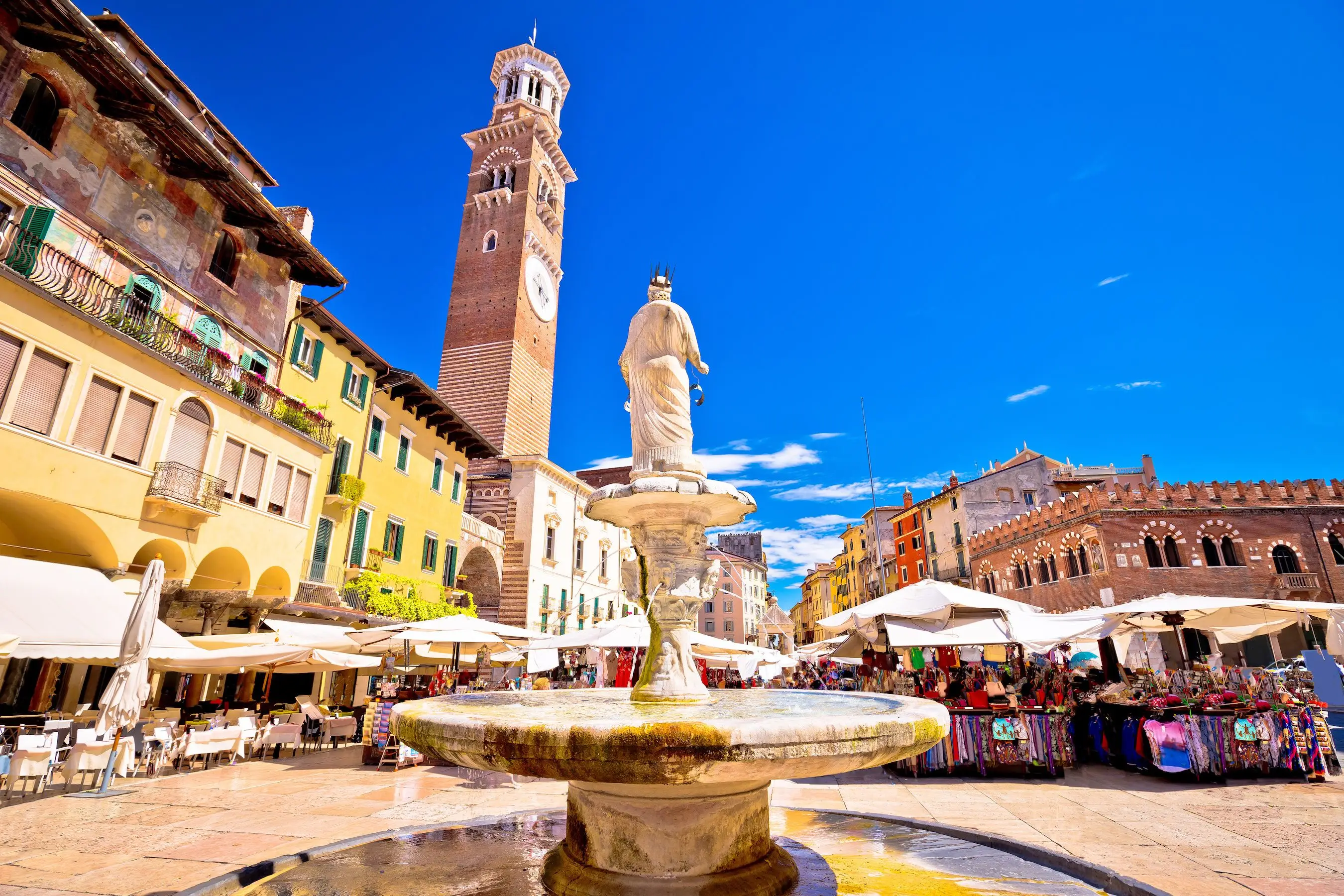
Torre dei Lamberti & Piazza delle Erbe
Climb to the top of the 275 feet (84m) high medieval tower overlooking the heart of historic Verona.
Show More

Giardino Giusti
Take a break in one of Verona's most beautiful and historic gardens.
Show More

Casa di Giulietta
Visit the fictional setting of Shakespeare's tale of the star-crossed lovers Romeo and Juliet.
Show More

Piazza dei Signori
Be sure not to miss this oft-overlooked historic square surrounded by beautiful buildings.
Show More

Roman Arena
Stand in a first century Roman amphitheatre that is so well preserved that it hosts concerts even today.
Show More

Torre dei Lamberti & Piazza delle Erbe
Climb to the top of the 275 feet (84m) high medieval tower overlooking the heart of historic Verona.
Show More

Giardino Giusti
Take a break in one of Verona's most beautiful and historic gardens.
Show More

Casa di Giulietta
Visit the fictional setting of Shakespeare's tale of the star-crossed lovers Romeo and Juliet.
Show More

Piazza dei Signori
Be sure not to miss this oft-overlooked historic square surrounded by beautiful buildings.
Show More
prev
next

Day 4
Venice


Piazza dei Signori
 Highlight of Verona
Highlight of VeronaBe sure not to miss this oft-overlooked historic square surrounded by beautiful buildings.
Lined by notable buildings and historic palaces, this public square is often overlooked by tourists. That is a shame as it is not only one of the most historic spaces in the city, but also one of the most elegant. Lining the square you'll see a number of buildings intricately tied to the city and its historic governance, such as the courthouse and the Scala Family Palace. In the center of the square you'll discover a monument of Dante, who spent seven years in Verona during his exile from Florence.

Roman Arena
 Highlight of Verona
Highlight of VeronaStand in a first century Roman amphitheatre that is so well preserved that it hosts concerts even today.
From gladiators to grand summer operas, this magnificent first-century Roman Arena, sitting in the heart of the city, has seen it all. In its heyday (circa 130-1100 AD), the arena could seat 30,000 spectators and was one of the biggest of its kind in the world. These days it hosts one of the most famous opera festivals in the world between June and September. While there’s little to see inside except the impressive stonework, it is quite an experience to visit a Roman arena that is still a thriving concert venue. Indeed, for many, the arena is more memorable than even the ruins of the Colosseum in Rome, simply because it is so intact. Indeed, when stepping inside the arena, you can truly feel as if you are experiencing the same venue that specators visited two thousand years ago. If you climb to the top, you’ll also enjoy great city views.

Torre dei Lamberti & Piazza delle Erbe
 Highlight of Verona
Highlight of VeronaClimb to the top of the 275 feet (84m) high medieval tower overlooking the heart of historic Verona.
The Torre dei Lamberti is Verona's tallest Medieval tower, built by the Lamberti family in 1172. The red-brick clock tower dominates the Piazza delle Erbe that sits below, and defines Verona's medieval skyline. As such it is a popular tourist attraction, with visitors heading to the top of the tower to admire the 360-degree panoramic views over the city and the 13th-century bells in the belfry. The Piazza delle Erbe, meanwhile, is one of the most beautiful squares in the city. What used to be a Roman forum and later a medieval marketplace, the square is now home to a number of cafes, souvenir stalls, and the Madonna Verona fountain, which dates back to the time of Roman rule.
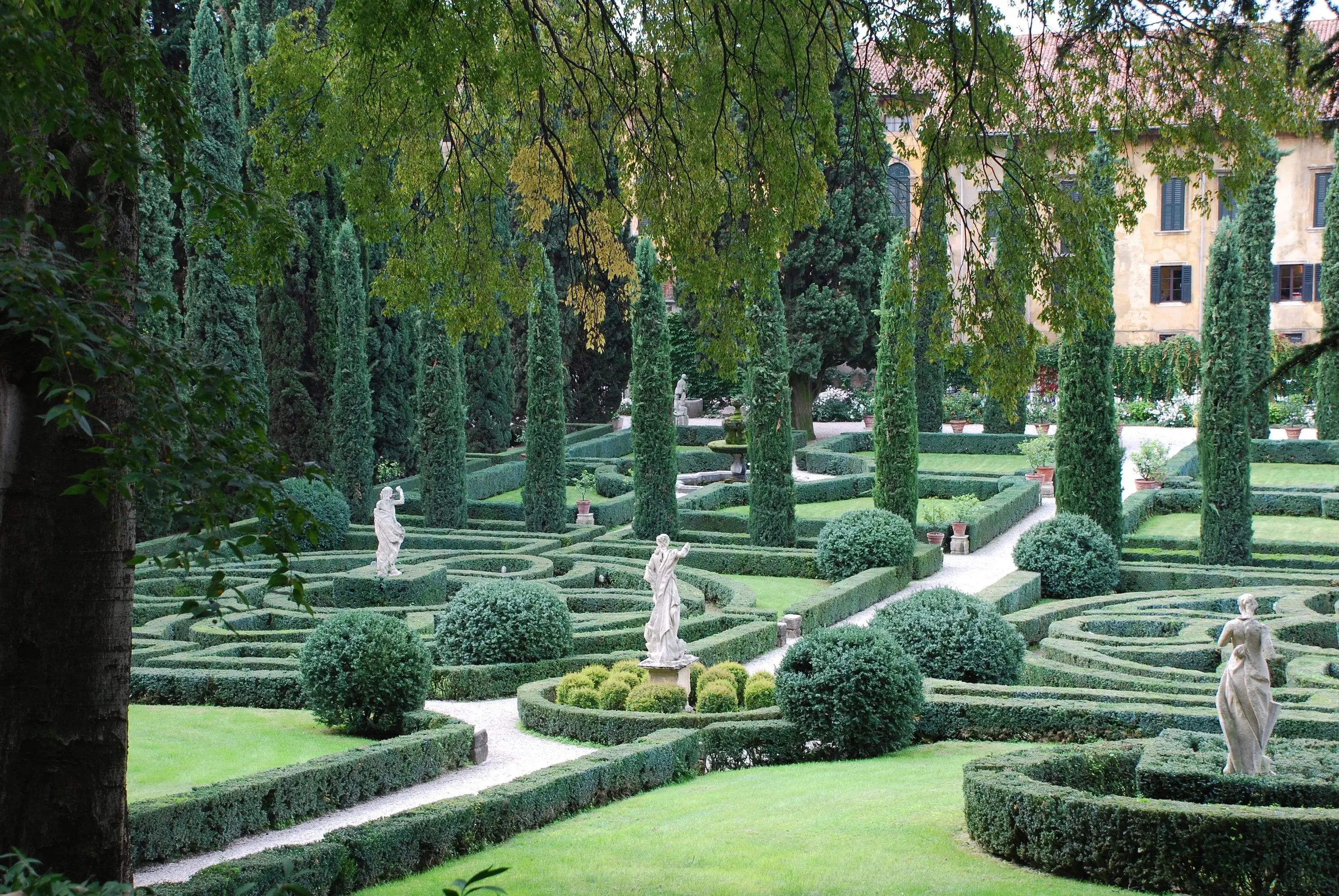
Giardino Giusti
 Highlight of Verona
Highlight of VeronaTake a break in one of Verona's most beautiful and historic gardens.
A litle ways from the center you'll discover an enchanting and relaxing retreat, the Giardino Giusti. These gardens are named after the Giusti family, which first used the property for wool dyeing in the 15th century. In the 16th century, the now quite wealthy family decided to use part of the property for more refined purposes, and a formal Renaissance garden was laid out, with maze-like short hedge rows, cypress trees, fountains, and grottoes.

Casa di Giulietta
 Highlight of Verona
Highlight of VeronaVisit the fictional setting of Shakespeare's tale of the star-crossed lovers Romeo and Juliet.
Shakespeare never set foot in Verona, yet his legendary tale lives on. The restored medieval building with its 1930s balcony opens into a courtyard of giggling teenagers and chattering tourists. Its bronze statue of Juliet is kept shiny by hundreds of thousands of hands who touch her right breast for good luck. Inside the house, period furniture and cinematic memorabilia are often overlooked by the hordes of tourists in line for the must-have "balcony" photograph.

Piazza dei Signori
 Highlight of Verona
Highlight of VeronaBe sure not to miss this oft-overlooked historic square surrounded by beautiful buildings.
Lined by notable buildings and historic palaces, this public square is often overlooked by tourists. That is a shame as it is not only one of the most historic spaces in the city, but also one of the most elegant. Lining the square you'll see a number of buildings intricately tied to the city and its historic governance, such as the courthouse and the Scala Family Palace. In the center of the square you'll discover a monument of Dante, who spent seven years in Verona during his exile from Florence.

Roman Arena
 Highlight of Verona
Highlight of VeronaStand in a first century Roman amphitheatre that is so well preserved that it hosts concerts even today.
From gladiators to grand summer operas, this magnificent first-century Roman Arena, sitting in the heart of the city, has seen it all. In its heyday (circa 130-1100 AD), the arena could seat 30,000 spectators and was one of the biggest of its kind in the world. These days it hosts one of the most famous opera festivals in the world between June and September. While there’s little to see inside except the impressive stonework, it is quite an experience to visit a Roman arena that is still a thriving concert venue. Indeed, for many, the arena is more memorable than even the ruins of the Colosseum in Rome, simply because it is so intact. Indeed, when stepping inside the arena, you can truly feel as if you are experiencing the same venue that specators visited two thousand years ago. If you climb to the top, you’ll also enjoy great city views.

Torre dei Lamberti & Piazza delle Erbe
 Highlight of Verona
Highlight of VeronaClimb to the top of the 275 feet (84m) high medieval tower overlooking the heart of historic Verona.
The Torre dei Lamberti is Verona's tallest Medieval tower, built by the Lamberti family in 1172. The red-brick clock tower dominates the Piazza delle Erbe that sits below, and defines Verona's medieval skyline. As such it is a popular tourist attraction, with visitors heading to the top of the tower to admire the 360-degree panoramic views over the city and the 13th-century bells in the belfry. The Piazza delle Erbe, meanwhile, is one of the most beautiful squares in the city. What used to be a Roman forum and later a medieval marketplace, the square is now home to a number of cafes, souvenir stalls, and the Madonna Verona fountain, which dates back to the time of Roman rule.

Giardino Giusti
 Highlight of Verona
Highlight of VeronaTake a break in one of Verona's most beautiful and historic gardens.
A litle ways from the center you'll discover an enchanting and relaxing retreat, the Giardino Giusti. These gardens are named after the Giusti family, which first used the property for wool dyeing in the 15th century. In the 16th century, the now quite wealthy family decided to use part of the property for more refined purposes, and a formal Renaissance garden was laid out, with maze-like short hedge rows, cypress trees, fountains, and grottoes.

Casa di Giulietta
 Highlight of Verona
Highlight of VeronaVisit the fictional setting of Shakespeare's tale of the star-crossed lovers Romeo and Juliet.
Shakespeare never set foot in Verona, yet his legendary tale lives on. The restored medieval building with its 1930s balcony opens into a courtyard of giggling teenagers and chattering tourists. Its bronze statue of Juliet is kept shiny by hundreds of thousands of hands who touch her right breast for good luck. Inside the house, period furniture and cinematic memorabilia are often overlooked by the hordes of tourists in line for the must-have "balcony" photograph.

Piazza dei Signori
 Highlight of Verona
Highlight of VeronaBe sure not to miss this oft-overlooked historic square surrounded by beautiful buildings.
Lined by notable buildings and historic palaces, this public square is often overlooked by tourists. That is a shame as it is not only one of the most historic spaces in the city, but also one of the most elegant. Lining the square you'll see a number of buildings intricately tied to the city and its historic governance, such as the courthouse and the Scala Family Palace. In the center of the square you'll discover a monument of Dante, who spent seven years in Verona during his exile from Florence.
prev
next


Day 5
Depart Venice
Day 5
Depart Venice


Morning/Mid-Day
Arsenale & Castello
The Venetian navy once ruled the waves in the Adriatic Sea. You can find out more about the Venetian navy's rich and colorful history at the Naval History Museum beside the great naval dockyards at the Arsenale. These mammoth shipyards constructed the Venetian Republic's fleet, which at one time was unrivaled in tonnage, fire-power, and efficiency. Its payroll numbered 16,000, and in the 16th-century wars against the Ottomans a new galley left its yards every morning for 100 days. This helped to secure victory in the decisive Battle of Lepanto, which was the last great sea conflict fought by galleys and which proved crucial to stopping the Turkish advance into Europe. The rest of the Castello District has some wonderful gems hidden away in its back alleys and canals. It is one of the least visited parts of the city, meaning it is a great place to head if you want to avoid the crowds. It even has Venice's first public park (Giardini Pubblici), which was created by order of Napoleon. Four convents were razed to make room for it, but now it is a favorite spot for locals. It is also the venue of the famous Biennale Arts Festival venue. Established in 1895, the Biennale has an attendance today of over 500,000 visitors at the Art Exhibition.

Venice Naval Ship Pavillion
See some of Venice's historic ships and grand vessels inside what was once a workshop to build and store oars.
Show More

Arsenale Gate
Visit the gate to what is known as "one of the oldest factories in the world" - Venice's historic shipyard.
Show More
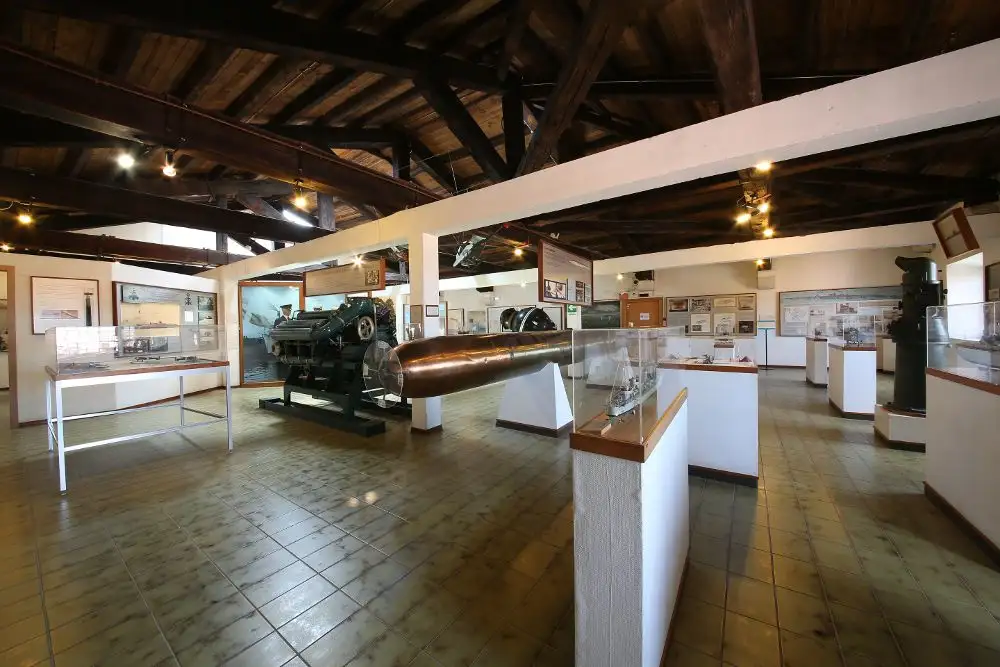
Naval History Museum of Venice
Explore the numerous collections of naval artefacts inside this historic naval museum.
Show More

Venice Naval Ship Pavillion
See some of Venice's historic ships and grand vessels inside what was once a workshop to build and store oars.
Show More

Arsenale Gate
Visit the gate to what is known as "one of the oldest factories in the world" - Venice's historic shipyard.
Show More

Naval History Museum of Venice
Explore the numerous collections of naval artefacts inside this historic naval museum.
Show More

Venice Naval Ship Pavillion
See some of Venice's historic ships and grand vessels inside what was once a workshop to build and store oars.
Show More
prev
next

Day 5
Depart Venice


Venice Naval Ship Pavillion
 Highlight of Arsenale & Castello
Highlight of Arsenale & CastelloSee some of Venice's historic ships and grand vessels inside what was once a workshop to build and store oars.
Located next to the Naval Museum, the ‘Padiglione delle Navi’ (Ships Pavilion) is a must visit too. Inside what was once an oars workshop and storage facility you'll find a collection of some of Venice's impressive ships and vessels that were manufactured in Venice in the Arsenal located close by.
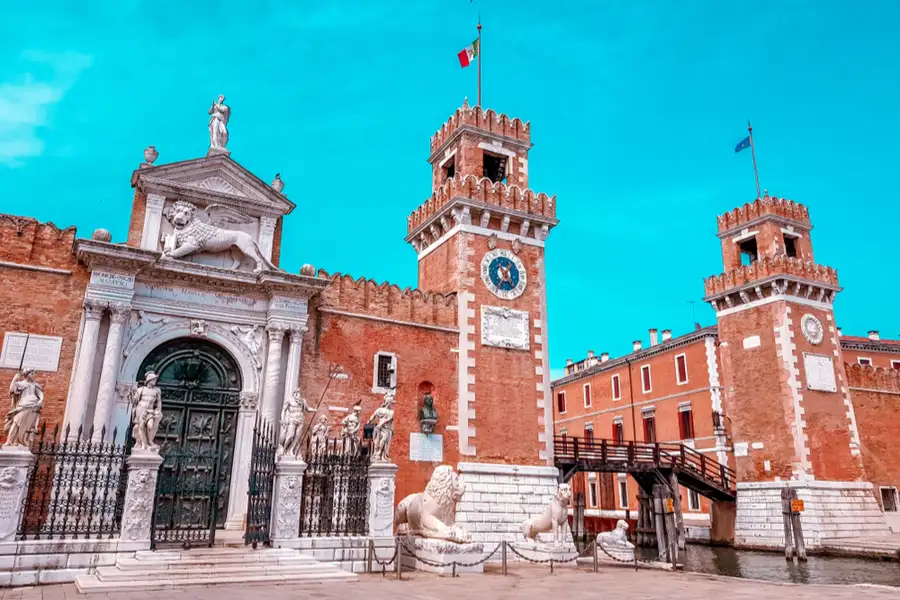
Arsenale Gate
 Highlight of Arsenale & Castello
Highlight of Arsenale & CastelloVisit the gate to what is known as "one of the oldest factories in the world" - Venice's historic shipyard.
The Arsenale is one of Venice's major landmarks and one that has so much historical significance. The gigantic shipyard was where the Venetian Republic built their warships and commercial ships for trade. The Arsenale is closed to the public but you can see the great main gateway, in the form of a triumphal arch (The Porta Magna) one of the earliest works of Venetian Renaissance architecture in the city.

Naval History Museum of Venice
 Highlight of Arsenale & Castello
Highlight of Arsenale & CastelloExplore the numerous collections of naval artefacts inside this historic naval museum.
Apart from relating the history of Venetian naval power and displays of armaments produced in the Arsenale and captured by Venetian forces, this fascinating museum features exhibits of naval weaponry from the First and Second World Wars and over 25,000 maritime objects and artefacts.

Venice Naval Ship Pavillion
 Highlight of Arsenale & Castello
Highlight of Arsenale & CastelloSee some of Venice's historic ships and grand vessels inside what was once a workshop to build and store oars.
Located next to the Naval Museum, the ‘Padiglione delle Navi’ (Ships Pavilion) is a must visit too. Inside what was once an oars workshop and storage facility you'll find a collection of some of Venice's impressive ships and vessels that were manufactured in Venice in the Arsenal located close by.

Arsenale Gate
 Highlight of Arsenale & Castello
Highlight of Arsenale & CastelloVisit the gate to what is known as "one of the oldest factories in the world" - Venice's historic shipyard.
The Arsenale is one of Venice's major landmarks and one that has so much historical significance. The gigantic shipyard was where the Venetian Republic built their warships and commercial ships for trade. The Arsenale is closed to the public but you can see the great main gateway, in the form of a triumphal arch (The Porta Magna) one of the earliest works of Venetian Renaissance architecture in the city.

Naval History Museum of Venice
 Highlight of Arsenale & Castello
Highlight of Arsenale & CastelloExplore the numerous collections of naval artefacts inside this historic naval museum.
Apart from relating the history of Venetian naval power and displays of armaments produced in the Arsenale and captured by Venetian forces, this fascinating museum features exhibits of naval weaponry from the First and Second World Wars and over 25,000 maritime objects and artefacts.

Venice Naval Ship Pavillion
 Highlight of Arsenale & Castello
Highlight of Arsenale & CastelloSee some of Venice's historic ships and grand vessels inside what was once a workshop to build and store oars.
Located next to the Naval Museum, the ‘Padiglione delle Navi’ (Ships Pavilion) is a must visit too. Inside what was once an oars workshop and storage facility you'll find a collection of some of Venice's impressive ships and vessels that were manufactured in Venice in the Arsenal located close by.
prev
next

What's Included In Venice in Five Days Trip

Pre-Paid Tours and Activities:
- 'First Walk' Guided Tour in Venice
- Private Gondola Ride

Go Real Travel Mobile App:
- Itinerary Plan & Reservations Info
- Points of Interest
- Detailed Travel Information
- Maps & Directions
Other Trips You May Like
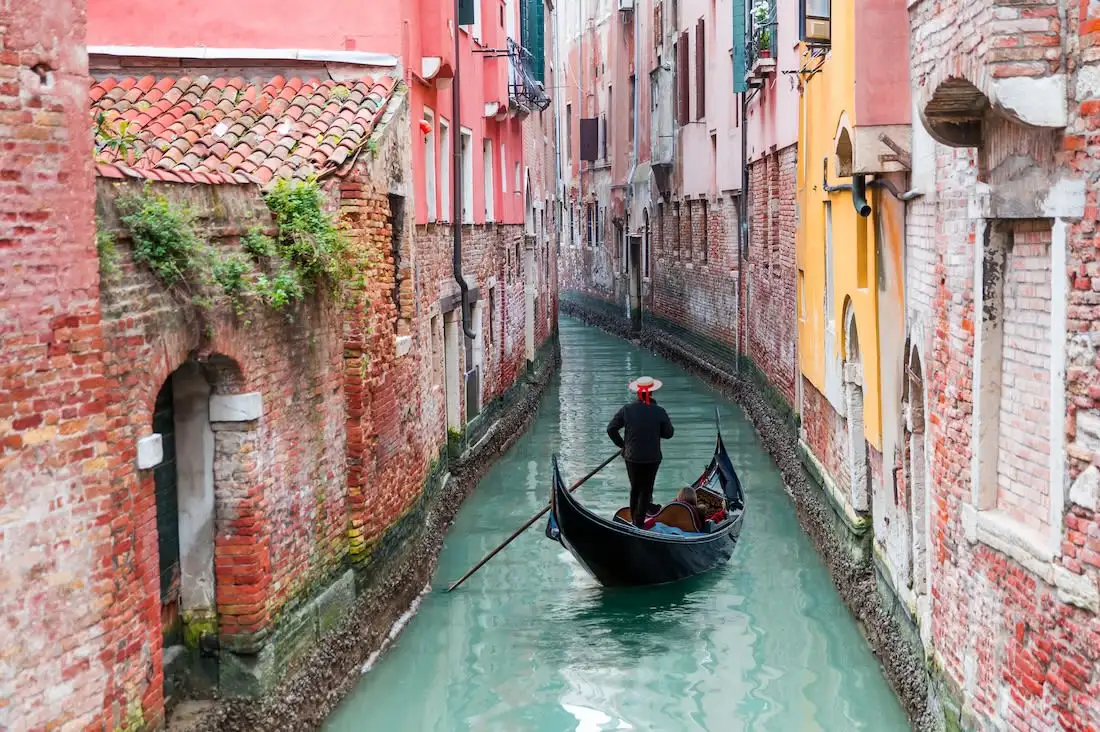
8 Days
From$2424USD

12 Days
From$3129USD
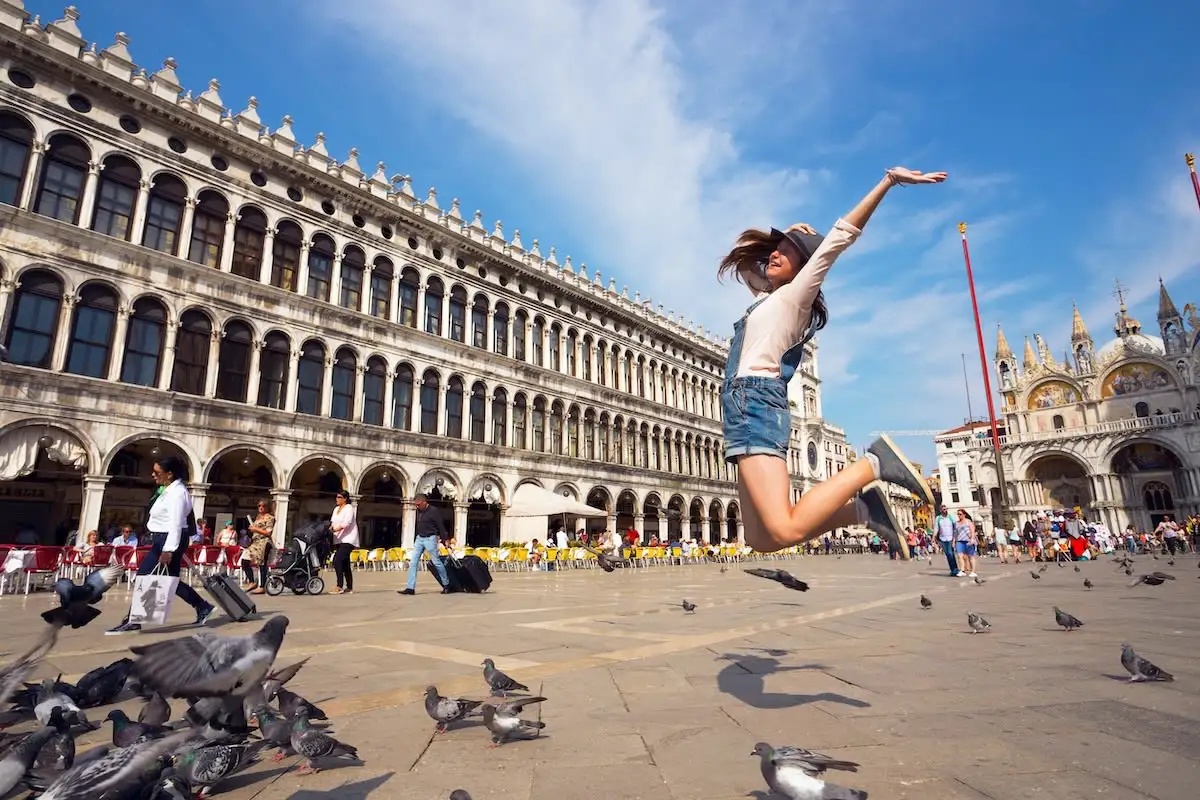
10 Days
From$2600USD

12 Days
From$3175USD

4 Days
From$1295USD
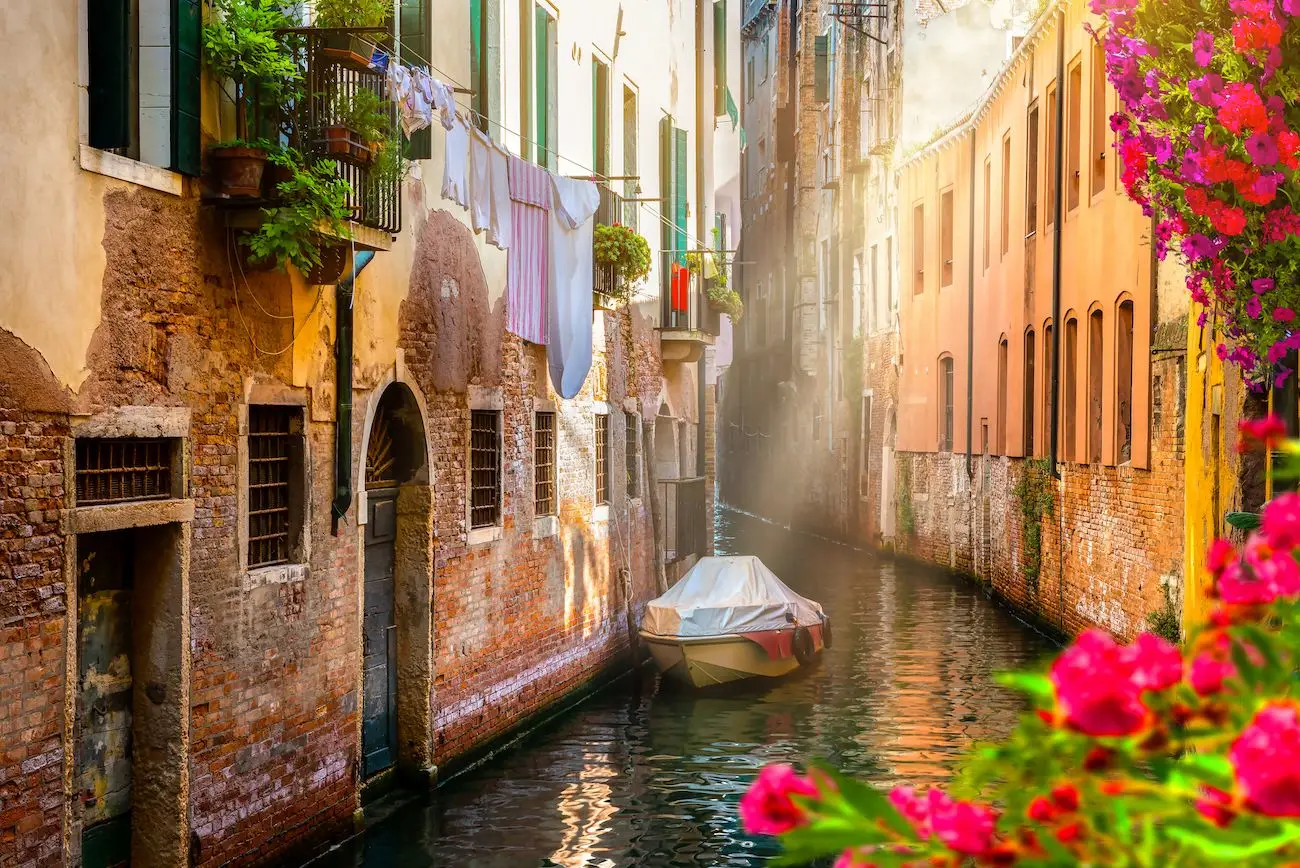
7 Days
From$2593USD

7 Days
From$2139USD

14 Days
From$3559USD

10 Days
From$4033USD

8 Days
From$2424USD

12 Days
From$3129USD

10 Days
From$2600USD

12 Days
From$3175USD

4 Days
From$1295USD

7 Days
From$2593USD

7 Days
From$2139USD

14 Days
From$3559USD

10 Days
From$4033USD
prev
next
Featured Blogs
prev
next
Our Customers Say It Best
Marianne Strydom, Paarl, South Africa
I just wanted to thank you for organizing an amazing trip for me – I packed in so much in such a short period of time and everything was just perfect. The way you do things makes it possible to really get to know the destination, which for me as a travel agent could not have been better. 

Otto Chuy, Los Angeles, California
I am still surprised how everything worked as planned, without a hitch. All instructions in your itinerary were precise and correct. Your suggestions and comments in each of the locations we went to were very helpful. All your guides, without exception, were wonderful and exactly on time. 

Malini Dutta, Boston, Massachusetts
We can't thank you enough for the detailed plans, maps, and suggestions. It really felt that someone was holding our hands and showing us around. We had all the excitement of discovering foreign lands, with none of the problems that can happen while negotiating unfamiliar places. In fact, all the cities felt like home within a few hours of arriving and exploring. 

Bev and Mark Frankel, Williamsburg, Virginia
We could not be more pleased with Go Real Travel! You took the guess work out of things like public transport but still managed to allow us the freedom to tour as we wanted. Our guides were exceptional and every time I saw a Viking Cruise tour of 25 people, I realized the quality experience we were getting with Go Real. 

Marianne Strydom, Paarl, South Africa
I just wanted to thank you for organizing an amazing trip for me – I packed in so much in such a short period of time and everything was just perfect. The way you do things makes it possible to really get to know the destination, which for me as a travel agent could not have been better. 

Otto Chuy, Los Angeles, California
I am still surprised how everything worked as planned, without a hitch. All instructions in your itinerary were precise and correct. Your suggestions and comments in each of the locations we went to were very helpful. All your guides, without exception, were wonderful and exactly on time. 

Malini Dutta, Boston, Massachusetts
We can't thank you enough for the detailed plans, maps, and suggestions. It really felt that someone was holding our hands and showing us around. We had all the excitement of discovering foreign lands, with none of the problems that can happen while negotiating unfamiliar places. In fact, all the cities felt like home within a few hours of arriving and exploring. 

Bev and Mark Frankel, Williamsburg, Virginia
We could not be more pleased with Go Real Travel! You took the guess work out of things like public transport but still managed to allow us the freedom to tour as we wanted. Our guides were exceptional and every time I saw a Viking Cruise tour of 25 people, I realized the quality experience we were getting with Go Real. 



Explore cities in more detail

Rome
One of the must-sees of Italy, and indeed all of Europe, Rome is a city with history flowing through its veins. There is an endless amount to see, do, and learn here, with something for every taste and disposition. Rome was the center of Western civilization for a Millenium and during that time, accumulated a list of historical and cultural treasures that no other destination can truly match. The Pantheon, Colosseum, Roman Forum, and Cirus of Maxentius are just a few examples of what can be seen and experienced in Rome, which at times feels more like a giant outdoor museum than a city. At Rome’s heart, you’ll find the Vatican, home of the Roman Catholic Church and the Pope. Here visitors can see the legendary Sistine Chapel. Transcending a mere building, the chapel is a walk-in work of art. Although historical sights can be found on just about every corner, it’s entirely possible to fill a day just wandering around Rome. The city’s charming streets and open Piazzas are filled with beautiful sights and places to sit, grab the best Cappuccino in the world, and enjoy the view.

Learn About Rome
Build Rome Trip
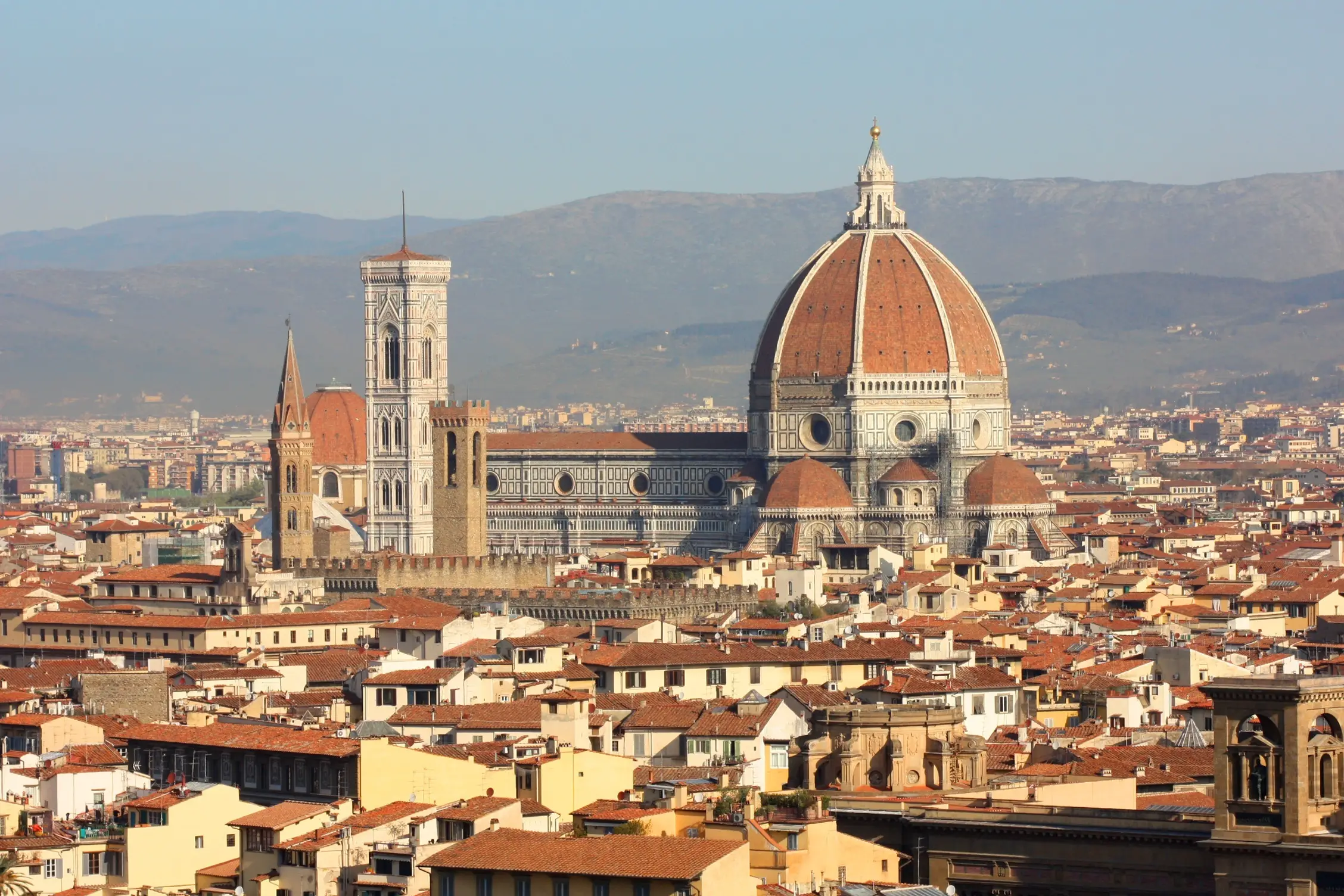
Florence
Culture and history are thick in the air in Florence. Located on the banks of the Arno River in Tuscany, Florence’s past is deeply compelling. The birthplace of the Renaissance, Florence is where innovators like Dante, Machiavelli, Michelangelo, and Da Vinci made their fortunes. Centuries of art, politics, and commerce have left their mark on every stone in this Northern Italian city. In the 15th and 16th centuries, Florentine banks funded new enterprises that went on to change the history of the world. Powerful families like the Medici’s financed some of the finest art in history and pioneered new ways of doing statecraft and politics. As you stand in the Piazzale Michelangelo and gaze upon the city below it’s hard to take it all in at once. It feels like behind every door in Florence might hide a work of genius. Michelangelo’s David and Botticelli’s Primavera can be found just a short walk away. After a long day wandering the streets and gazing at art, fueled by exquisite coffee and gelato, relax like the locals do: with a glass of some of the best wine in the world.

Learn About Florence
Build Florence Trip

Milan
Milan is Italy’s most forward-looking city. An international center for fashion, fine dining, and design, it seems as though Milanese people breathe style. From the gleam on your wine glass to the twists of its cathedral’s spires, everything in Milan is finished to perfection. Home to the Italian stock exchange, a world-famous fashion industry, and a frantic business district, Milan is fast-paced and commercially minded. The shopping in Milan is second to none. At the Galleria Vittorio Emanuele II, one of the world’s oldest shopping malls, a glass-iron ceiling soars over brands like Louis Vuitton, Gucci, Massimo Dutti, and Amani. Along with the fashion, Milan’s cathedral, castle, and canals are also must-sees. But to view the city’s most prized possession - Leonardo da Vinci’s Last Supper, you must make an appointment. Tickets to view this mural sell out weeks in advance. It is truly a bucket-list worthy work of art. After a day taking in all the glamor and culture, take a seat in one of Milan’s well-appointed eateries. The Navigli Quarter is packed with restaurants, bars, and cafes, perfect for a relaxed Aperol spritz or pizza along the city’s canals.

Learn About Milan
Build Milan Trip
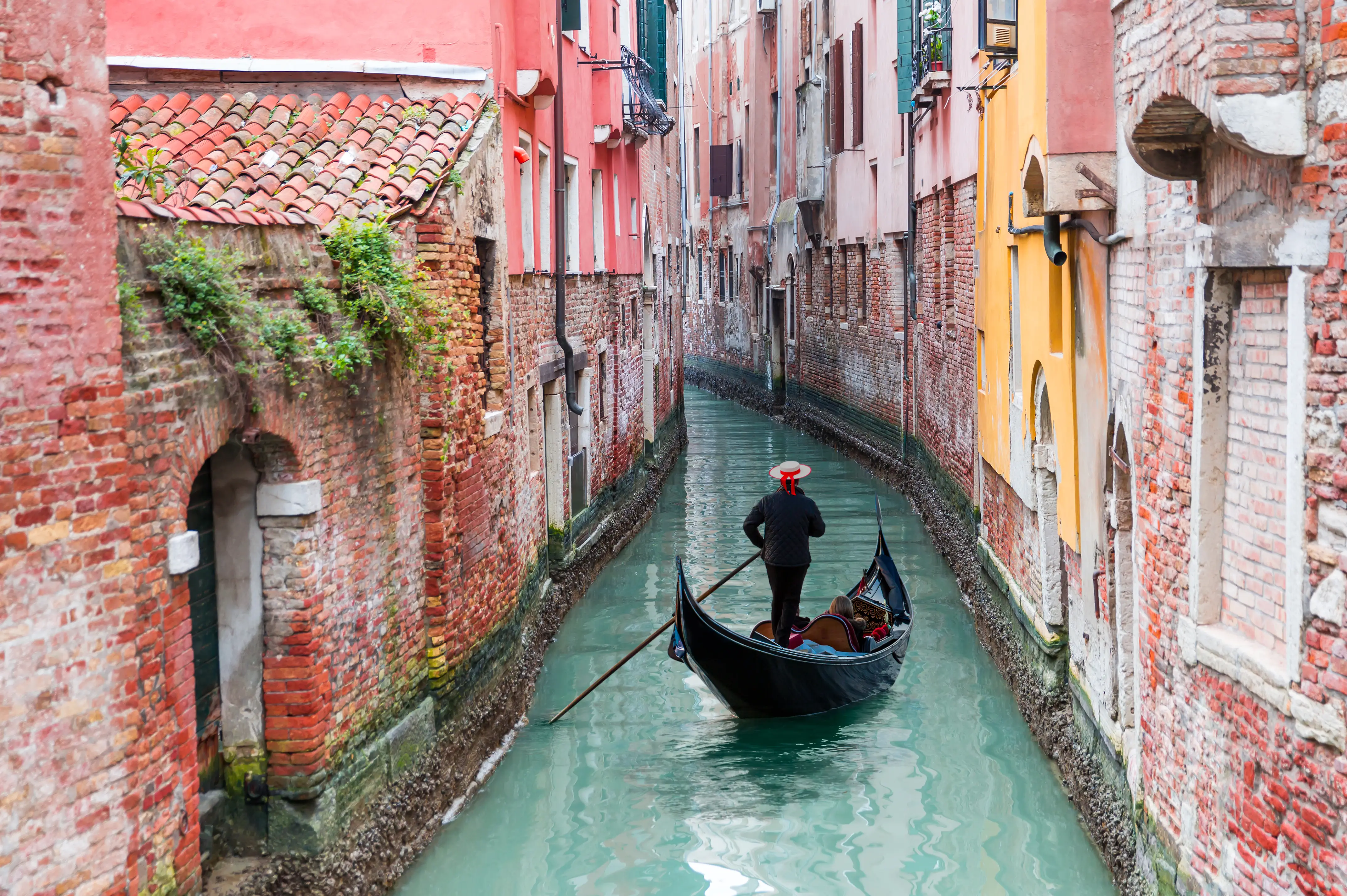
Venice
Venice is a city with no equal. Built on a series of islands on a lagoon, it was once a powerful city-state. Echoes of that old magnificence can be seen everywhere here, from the stunning buildings that rise out of the canals, to the bridges that arc across them. Take a Gondola ride through the canals that form the city’s veins, or wander through the winding streets drinking in the sights. You’ll see Venice attracts tourists in huge numbers, and that’s with good reason. It’s home to a seemingly limitless amount of art, culture, history, and architecture. St Mark’s Basilica, the Doge’s Palace, and the Campanile di San Marco just barely scratch the surface. There’s a 700-year-old market, Rialto, which is still open today. The Ponte di Rialto bridge connects the neighborhoods of San Marco and San Polo, stretching across the Grand Canal. Venice has weathered the last several centuries with elegance and pride, a place that will surpass even your highest expectations.

Learn About Venice
Build Venice Trip
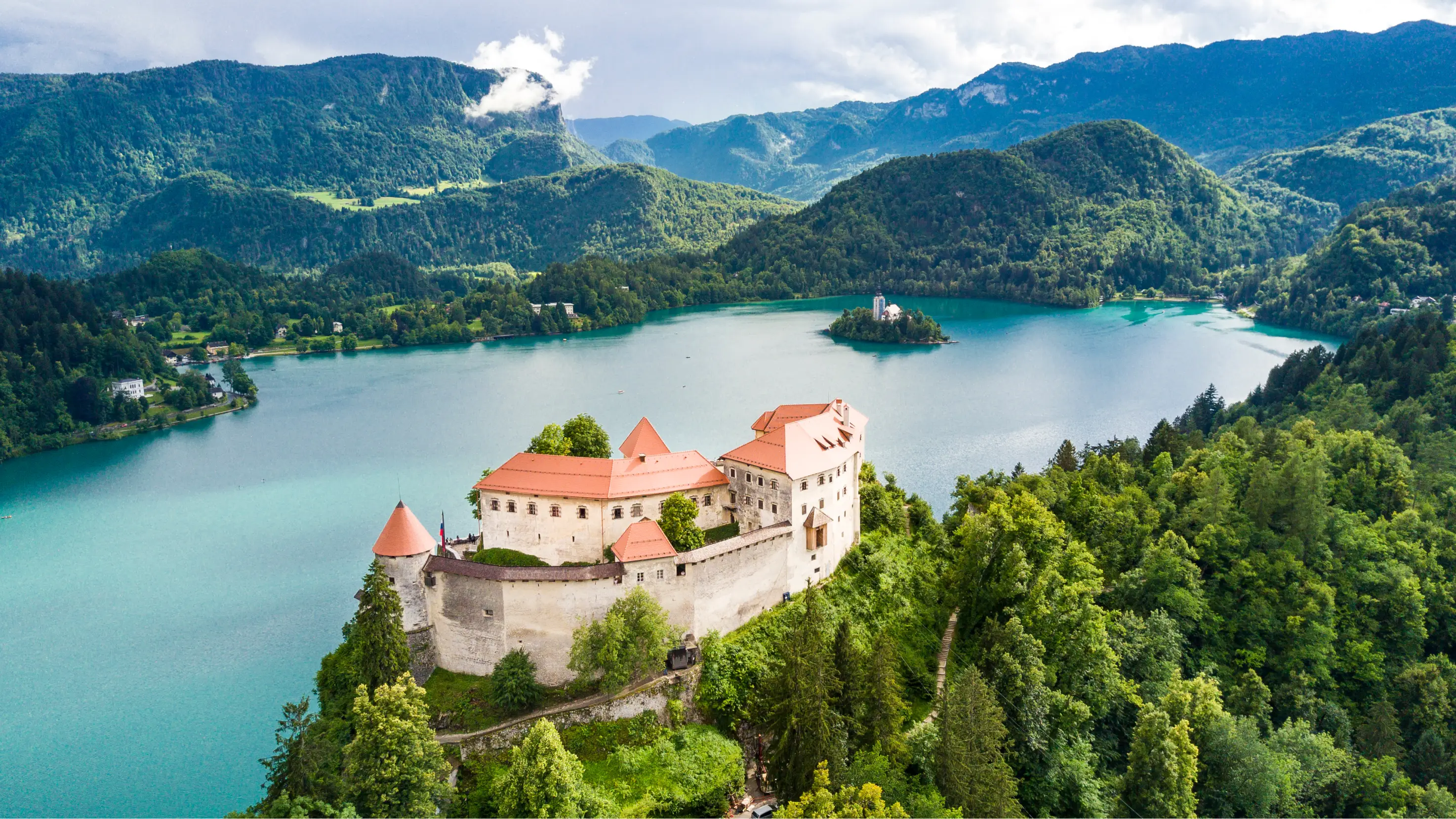
Ljubljana
One of Europe's smallest capitals, Ljubljana is still Slovenia's biggest city. What it lacks in size, though, it more than makes up for in charm, beauty, and personality. It's also one of Europe's greenest cities and is perfect for a bike ride or a leisurely walk. With plenty of open spaces, gorgeous architecture, and cultural treats, it's easy to fill the time here. The Tromostovje, or Triple Bridge, is one of Ljubljana's main attractions, connecting the Old Town with the new. Excellent pizza can be found here, and a series of bars and cafes are dotted throughout the town and along the banks of the river. The anarchic Metelkova City reveals Ljubljana's grittier side, with art exhibitions and performances housed in a disused military barracks. Ljubljana is charm and beauty compressed neatly into a small and pretty space.

Learn About Ljubljana
Build Ljubljana Trip
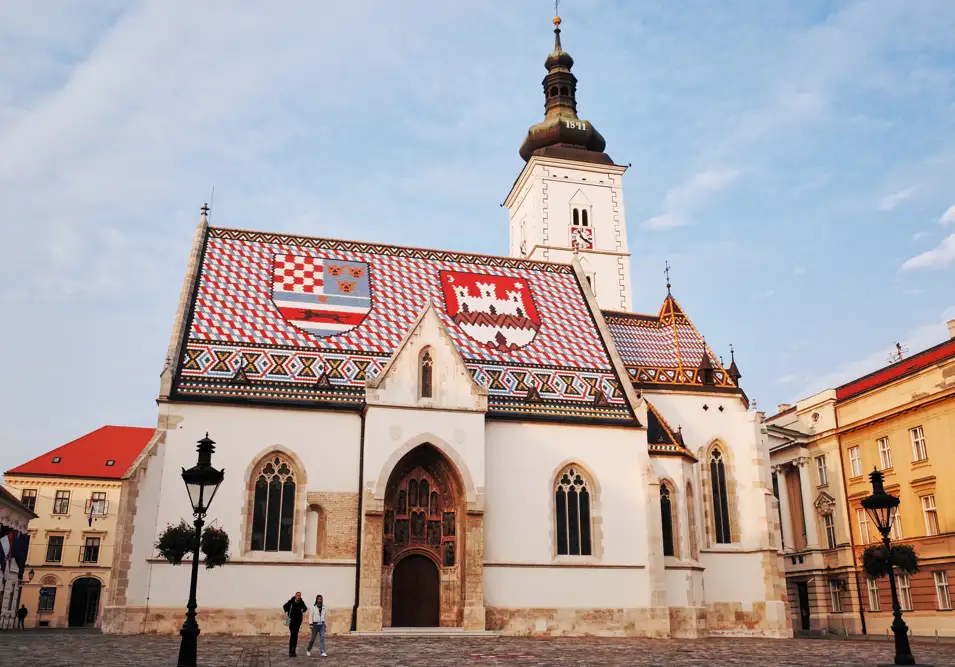
Zagreb
Zagreb is Croatia's biggest city, known for its cultural roots and vibrant street life. The city's rich history is evident in the mix of different architectural styles, including secessionist, classical, neo-Baroque, neo-Gothic, and art deco. Even the seemingly lackluster parts of town have been brought to life by street artists. At first glance, the red rooftops and cobblestone streets might seem reminiscent of other popular European cities, but you'll soon learn that Zagreb has a spirit all its own. Everywhere you go, you'll be rubbing elbows with lively locals hanging out at open cafes, gardens, and parks, or rushing to the next event on the calendar. Thanks to the spacious pedestrian zones attracting locals, expats, and visitors alike, socializing with new people and finding something unexpected to do is effortless. At night, the youth of the city becomes even more exuberant. With plenty of jazz clubs, beer halls, cocktail bars, and casinos, there's always something to do because the city never sleeps.

Learn About Zagreb
Build Zagreb Trip

Rome
One of the must-sees of Italy, and indeed all of Europe, Rome is a city with history flowing through its veins. There is an endless amount to see, do, and learn here, with something for every taste and disposition. Rome was the center of Western civilization for a Millenium and during that time, accumulated a list of historical and cultural treasures that no other destination can truly match. The Pantheon, Colosseum, Roman Forum, and Cirus of Maxentius are just a few examples of what can be seen and experienced in Rome, which at times feels more like a giant outdoor museum than a city. At Rome’s heart, you’ll find the Vatican, home of the Roman Catholic Church and the Pope. Here visitors can see the legendary Sistine Chapel. Transcending a mere building, the chapel is a walk-in work of art. Although historical sights can be found on just about every corner, it’s entirely possible to fill a day just wandering around Rome. The city’s charming streets and open Piazzas are filled with beautiful sights and places to sit, grab the best Cappuccino in the world, and enjoy the view.

Learn About Rome
Build Rome Trip

Florence
Culture and history are thick in the air in Florence. Located on the banks of the Arno River in Tuscany, Florence’s past is deeply compelling. The birthplace of the Renaissance, Florence is where innovators like Dante, Machiavelli, Michelangelo, and Da Vinci made their fortunes. Centuries of art, politics, and commerce have left their mark on every stone in this Northern Italian city. In the 15th and 16th centuries, Florentine banks funded new enterprises that went on to change the history of the world. Powerful families like the Medici’s financed some of the finest art in history and pioneered new ways of doing statecraft and politics. As you stand in the Piazzale Michelangelo and gaze upon the city below it’s hard to take it all in at once. It feels like behind every door in Florence might hide a work of genius. Michelangelo’s David and Botticelli’s Primavera can be found just a short walk away. After a long day wandering the streets and gazing at art, fueled by exquisite coffee and gelato, relax like the locals do: with a glass of some of the best wine in the world.

Learn About Florence
Build Florence Trip

Milan
Milan is Italy’s most forward-looking city. An international center for fashion, fine dining, and design, it seems as though Milanese people breathe style. From the gleam on your wine glass to the twists of its cathedral’s spires, everything in Milan is finished to perfection. Home to the Italian stock exchange, a world-famous fashion industry, and a frantic business district, Milan is fast-paced and commercially minded. The shopping in Milan is second to none. At the Galleria Vittorio Emanuele II, one of the world’s oldest shopping malls, a glass-iron ceiling soars over brands like Louis Vuitton, Gucci, Massimo Dutti, and Amani. Along with the fashion, Milan’s cathedral, castle, and canals are also must-sees. But to view the city’s most prized possession - Leonardo da Vinci’s Last Supper, you must make an appointment. Tickets to view this mural sell out weeks in advance. It is truly a bucket-list worthy work of art. After a day taking in all the glamor and culture, take a seat in one of Milan’s well-appointed eateries. The Navigli Quarter is packed with restaurants, bars, and cafes, perfect for a relaxed Aperol spritz or pizza along the city’s canals.

Learn About Milan
Build Milan Trip

Venice
Venice is a city with no equal. Built on a series of islands on a lagoon, it was once a powerful city-state. Echoes of that old magnificence can be seen everywhere here, from the stunning buildings that rise out of the canals, to the bridges that arc across them. Take a Gondola ride through the canals that form the city’s veins, or wander through the winding streets drinking in the sights. You’ll see Venice attracts tourists in huge numbers, and that’s with good reason. It’s home to a seemingly limitless amount of art, culture, history, and architecture. St Mark’s Basilica, the Doge’s Palace, and the Campanile di San Marco just barely scratch the surface. There’s a 700-year-old market, Rialto, which is still open today. The Ponte di Rialto bridge connects the neighborhoods of San Marco and San Polo, stretching across the Grand Canal. Venice has weathered the last several centuries with elegance and pride, a place that will surpass even your highest expectations.

Learn About Venice
Build Venice Trip

Ljubljana
One of Europe's smallest capitals, Ljubljana is still Slovenia's biggest city. What it lacks in size, though, it more than makes up for in charm, beauty, and personality. It's also one of Europe's greenest cities and is perfect for a bike ride or a leisurely walk. With plenty of open spaces, gorgeous architecture, and cultural treats, it's easy to fill the time here. The Tromostovje, or Triple Bridge, is one of Ljubljana's main attractions, connecting the Old Town with the new. Excellent pizza can be found here, and a series of bars and cafes are dotted throughout the town and along the banks of the river. The anarchic Metelkova City reveals Ljubljana's grittier side, with art exhibitions and performances housed in a disused military barracks. Ljubljana is charm and beauty compressed neatly into a small and pretty space.

Learn About Ljubljana
Build Ljubljana Trip

Zagreb
Zagreb is Croatia's biggest city, known for its cultural roots and vibrant street life. The city's rich history is evident in the mix of different architectural styles, including secessionist, classical, neo-Baroque, neo-Gothic, and art deco. Even the seemingly lackluster parts of town have been brought to life by street artists. At first glance, the red rooftops and cobblestone streets might seem reminiscent of other popular European cities, but you'll soon learn that Zagreb has a spirit all its own. Everywhere you go, you'll be rubbing elbows with lively locals hanging out at open cafes, gardens, and parks, or rushing to the next event on the calendar. Thanks to the spacious pedestrian zones attracting locals, expats, and visitors alike, socializing with new people and finding something unexpected to do is effortless. At night, the youth of the city becomes even more exuberant. With plenty of jazz clubs, beer halls, cocktail bars, and casinos, there's always something to do because the city never sleeps.

Learn About Zagreb
Build Zagreb Trip
prev
next


 Map of Your Itinerary Route
Map of Your Itinerary Route
Zoom In to the cities to see your itinerary in more detail


 4.8
4.8 


